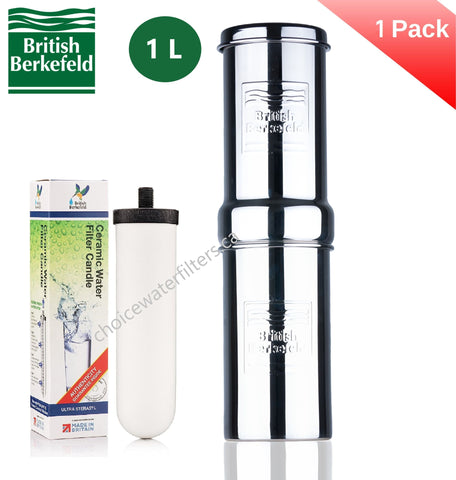What do Berkey Elements Remove?
What do Black Berkey® Elements Remove?
The powerful Black Berkey® Elements remove or reduce, pathogenic bacteria, cysts, parasites, harmful or unwanted chemicals such as herbicides, pesticides, uranium, VOCs, detergents, organic solvents, trihalomethanes, cloudiness, silt, sediment, heavy metals, foul tastes and odors, yet they leave in the healthful and beneficial minerals that your body needs.(see whats removed below)
|
ADDITIONAL INFORMATION; While the system can efficiently purify raw untreated water, always use the cleanest, clearest water possible. As an additional precaution, if using a source of water that you believe might contain extreme viral and bacteriological contamination, it recommended by the CDC, EPA and other organizations that approximately 16 drops of plain bleach (sodium hypochlorite) or iodine per gallon to treat the source water before purifying. This should kill minute pathogens in approximately 30 minutes. The disinfectant will then be removed after cycling the treated water through the Berkey System. Visit CLOROX.COM on taking ADDITIONAL PRECAUTIONS to make raw untreated water as safe as possible to drink. |
Testing parameters are on new filters - up to 100 gallons of water cycled previously through them. Performance of Berkey water filtration elements decrease with age, regular red dye tests are recommended especially if using untreated water.
Pathogenic Bacteria (And Surrogates): Removed to >99.9999%
Exceeds purification standard (Log 6)
|
---
Trihalomethanes: Removed to >99.8%
Below Lab Detectable Limits
|
---
Inorganic Minerals
Removed to Below Lab Detectable Limits
|
---
Heavy Metals (High & Low pH Levels)
|
|
|
---
Micro-Organisms: Removed to >99.9%
|
---
Pharmaceutical Drug Contaminants: Removed to >99.9%
|
|
|
|
---
Also removes or reduces:
|
|
|
|
Volatile Organic Compounds (VOCs)
Removed to below Lab detectable limits
|
|
|
|
|
|
|
|
---
Nuclear contamination
The Gravity Black Berkey Purification Elements reduce the Gross Beta concentration in the tap water by at least 95.3 %. The EPA limit for Gross Beta is 15 pCi/L; the Gravity Black Berkey Filter meets the EPA requirements for drinking water.
Gross Beta emitters that are removed:
|
Actinium 227 Californium 251 and 252 Cesium 137 Cobalt 60 Iodine129 and 131 |
Lead 210 Nickel 63 Promethium 145 Strontium 90 Technetium 99 |




